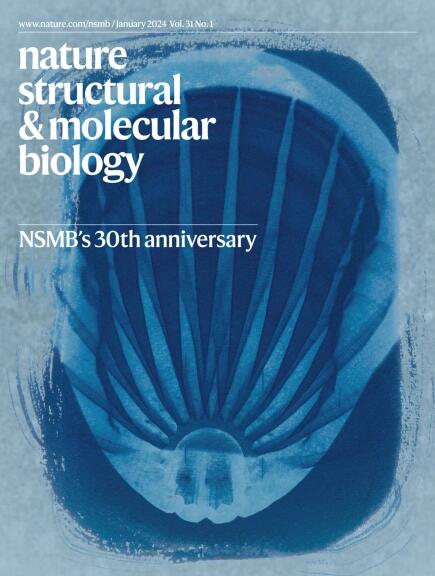异染色质蛋白Rhino与piRNA簇子集的结合取决于两个组蛋白标记的组合
IF 10.1
1区 生物学
Q1 BIOCHEMISTRY & MOLECULAR BIOLOGY
引用次数: 0
摘要
动物生殖细胞利用一种特殊的基于小RNA的沉默系统,称为piwi相互作用RNA (piRNA)途径,以防止转座因子(te)的不必要表达并维持基因组完整性。在果蝇生殖细胞中,大多数piRNA群体通过以异染色质蛋白1同源物犀牛为中心的复杂机制,起源于双链piRNA簇,基因组区域高度富集TE片段。尽管Rhino在体外可以与携带三甲基化H3K9的肽结合,但目前还不完全清楚为什么在体内只有一小部分h3k9me3修饰的异染色质被Rhino所占据。最近的研究表明,Rhino被Kipferl招募到piRNA簇的一个子集中。在这里,我们确定了一种不依赖于kipferl的Rhino募集模式,除了先前确定的H3K9me3的作用外,还依赖于Zeste的组蛋白H3赖氨酸27甲基转移酶增强子。在Kipferl-independent位点,我们发现Rhino通过其色域特异性结合H3K9me3和H3K27me3标记的位点。尽管从结构和生化的角度来看,双组蛋白修饰如何影响Rhino结合的确切机制尚不清楚,但我们的工作表明,组合修饰可能调节染色质结合蛋白相互作用的特异性。这些发现提供了对Rhino如何靶向piRNA源位点的更好理解,突出了果蝇生殖细胞TE沉默的复杂表观遗传景观。本文章由计算机程序翻译,如有差异,请以英文原文为准。


Binding of heterochromatin protein Rhino to a subset of piRNA clusters depends on a combination of two histone marks
Animal germ cells deploy a specialized small RNA-based silencing system, called the PIWI-interacting RNA (piRNA) pathway, to prevent unwanted expression of transposable elements (TEs) and maintain genome integrity. In Drosophila melanogaster germ cells, the majority of piRNA populations originate from dual-strand piRNA clusters, genomic regions highly enriched in TE fragments, via an elaborate machinery centered on the Heterochromatin Protein 1 homolog, Rhino. Although Rhino binds to peptides carrying tri-methylated H3K9 in vitro, it is not fully understood why in vivo only a fraction of H3K9me3-decorated heterochromatin is occupied by Rhino. Recent work revealed that Rhino is recruited to a subset of piRNA clusters by Kipferl. Here we identify a Kipferl-independent mode of Rhino recruitment that, in addition to the previously established role of H3K9me3, also depends on the histone H3 lysine 27 methyltransferase Enhancer of Zeste. At Kipferl-independent sites, we find that Rhino specifically binds to loci marked by both H3K9me3 and H3K27me3 via its chromodomain. Although the exact mechanism of how Rhino binding is influenced by dual histone modifications remains unclear from a structural and biochemical perspective, our work suggests that combinatorial modifications may regulate the specificity of chromatin-binding protein interactions. These findings provide an enhanced understanding of how Rhino targets piRNA source loci, highlighting the sophisticated epigenetic landscape governing TE silencing in Drosophila germ cells. The authors reveal that, in fruit fly ovaries, the protein Rhino is guided to specific regions of the genome by a combination of two histone modifications, enhancing understanding of how cells protect their DNA from harmful virus-like elements.
求助全文
通过发布文献求助,成功后即可免费获取论文全文。
去求助
来源期刊

Nature Structural & Molecular Biology
BIOCHEMISTRY & MOLECULAR BIOLOGY-BIOPHYSICS
CiteScore
22.00
自引率
1.80%
发文量
160
审稿时长
3-8 weeks
期刊介绍:
Nature Structural & Molecular Biology is a comprehensive platform that combines structural and molecular research. Our journal focuses on exploring the functional and mechanistic aspects of biological processes, emphasizing how molecular components collaborate to achieve a particular function. While structural data can shed light on these insights, our publication does not require them as a prerequisite.
 求助内容:
求助内容: 应助结果提醒方式:
应助结果提醒方式:


